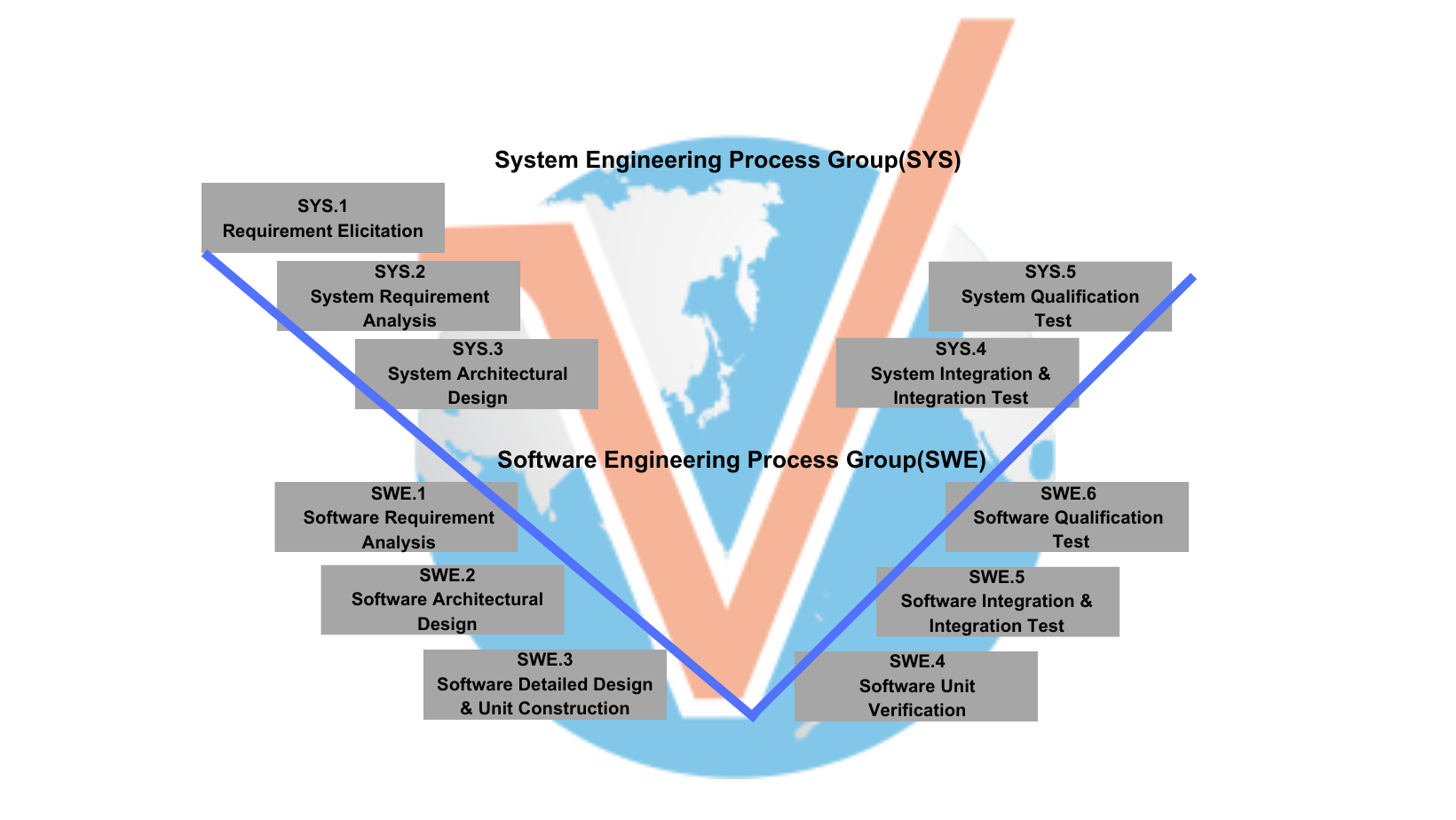Automotive → ASPICE
What is ASPICE?
ASPICE (Automotive Software Process Improvement Capability determination) is an industry-standard guideline for evaluating software development processes. Introduced in 2005, ASPICE helps automotive suppliers incorporate best practices to identify defects earlier in development and ensure that OEM requirements are met.
ASPICE → V-model
ASPICE leverages the V-model of software development, which splits the process into two parts. The letter V on left side represents the design and development steps, and the right side represents the testing steps.

ASPICE → Levels
ASPICE model suppliers who follow this can earn certifications according to standardized achievement phases; the ASPICE standard is scored in levels from zero to five, which clients can use to evaluate the proficiency of the development team.
ASPICE defines a set of process capability levels that organizations can use to assess their software development processes. These levels range from
- Level 0: Basic.
- Level 1: Performed.
- Level 2: Managed
- Level 3: Established.
- Level 4: Predictable.
- Level 5: Innovating.
